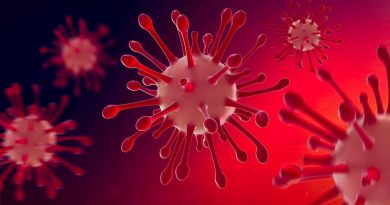Study finds high-fiber diet brings significant changes to human gut microbiome

A short-term intervention in daily fiber consumption can significantly alter the gut microbiome and nutrient intake, according to a study led by University of California, Irvine researchers. The research was recently published by the American Society for Microbiology.
Dietary fiber consists of resistant carbohydrates found in fruits, vegetables and whole grains. Fiber persists in our digestion system, and while not digestible by humans, our gut bacteria can metabolize fiber into short-chain fatty acids and other byproducts critical to human health.
Currently, the average person in North America consumes less than 50 percent of the recommended dietary fiber levels due to decreased consumption of plant-based foods, as processed foods have become widespread. A reduced fiber diet is concerning health officials because low consumption of dietary fiber may be associated with diseases like type II diabetes and colon cancer. Furthermore, new studies have begun to demonstrate how gut microbial changes can indirectly impact human health. Therefore, a better understanding of dietary fiber’s role on gut microbiota constitution could provide insights into managing diseases associated with the gut microbiome.
“The lack of fiber intake in the industrialized world is starving our gut microbes, with important health consequences that may be associated with increases in colorectal cancer, auto-immune diseases and even decreased vaccine efficacy and response to cancer immunotherapy,” said Katrine Whiteson, associate professor of molecular biology & biochemistry who co-directs the UCI Microbiome Initiative.
To determine if increasing dietary fiber for a short time could alter the gut microbiome diversity and metabolite production, a research team led by UCI Microbiome Initiative co-directors Whiteson and Jennifer Martiny, professor of ecology & evolutionary biology, along with Julia Massimelli Sewall, assistant teaching professor, implemented a two-week dietary intervention during an undergraduate biology course at UCI.
Students who participated in the study were given 10 high fiber unprocessed meals each week for two weeks. During the time, they collected samples to track their gut microbial composition before and after the intervention. The students also recorded their dietary information of macronutrients to reach a goal of 50 grams/day during a two-week intervention period.
Sewall, the course instructor, noted how much she and the students enjoyed learning which foods are enriched in fiber. “We were amazed to find how high in fiber berries and avocados are and exchanged ideas for how to prepare beans and lentils,” she said. “I think this experience will have a life-long impact on how we all look at nutrition labels.”
She also noted that the research experience highly motivated students in the course. “The students came to class very excited to discuss what they had eaten and could not wait to analyze the microbiome sequencing information to make data-driven conclusions. The study had an interesting and educational impact,” she added. “Our education research showed that the experience increased student’s interest in science and heightened the awareness of their diet habits.”
Graduate student Andrew Oliver, a teaching assistant for the course, coached students during the process and advised them to drink plenty of water in addition to offering instruction in microbiology methods and analysis. “Students raised their fiber intake by an average of 25 grams per day, but the variability of pre-intervention fiber intake was substantial,” he said. “A few students had to go from nearly zero to 50 grams daily by the end of the study. We all became a little obsessed with how much fiber was in the food we were eating.”
After the intervention, the researchers compared overall bacterial composition using DNA sequencing and measured short-chain fatty acids production using gas chromatography. In addition to sequencing, the team ran additional experiments targeting the known-fiber degrader, Bifidobacterium. The researchers found that the two-week intervention significantly altered individual gut microbiome composition, including an increase in the abundance of Bifidobacterium. However, despite the observed gut microbiome composition changes, they did not detect a significant shift in the abundance of these fatty acids.
Source: Read Full Article



